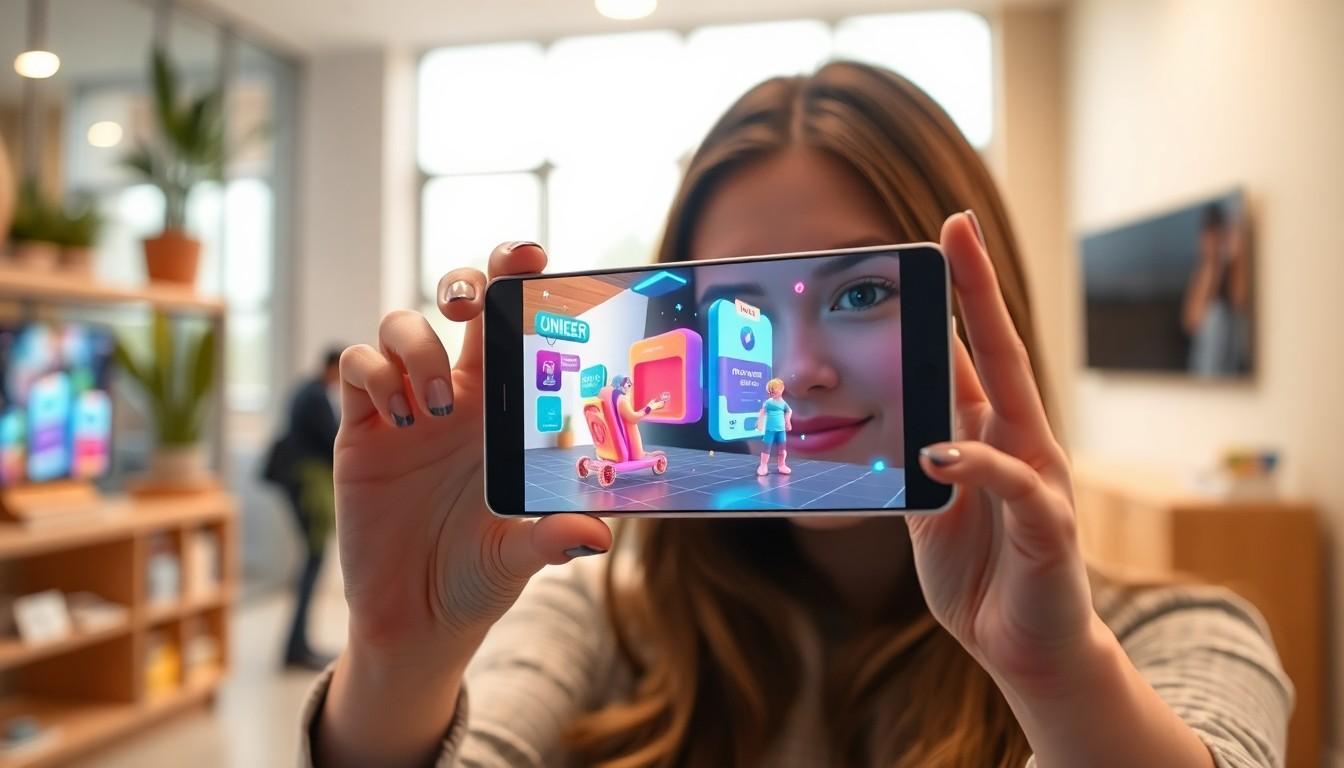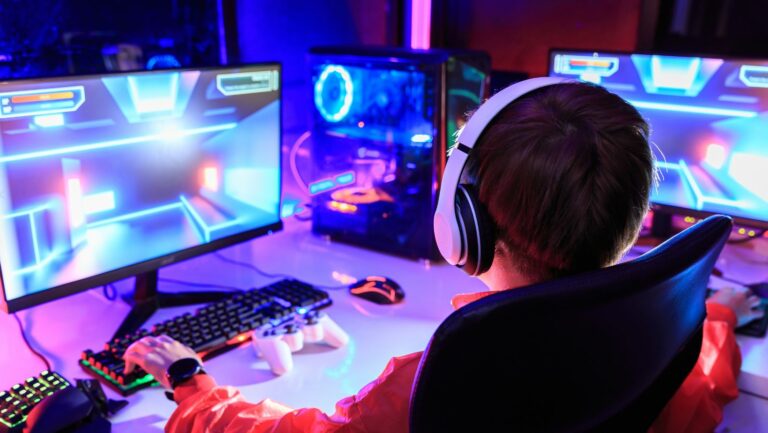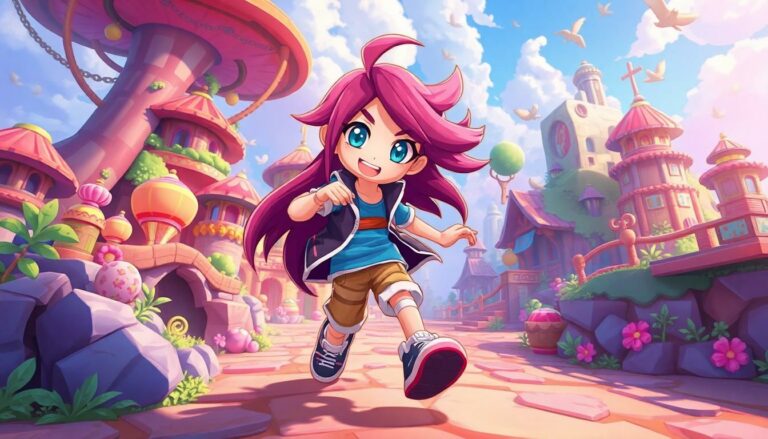
Augmented Reality Cards: Transforming Learning and Entertainment into Immersive Experiences
Imagine pulling a card from your pocket that springs to life, showcasing vibrant animations and interactive experiences. Augmented reality cards are revolutionizing the way we engage with information and entertainment. Gone are the days of static images and boring text; these cards bridge the gap between the digital and physical worlds, making learning and play more immersive than ever.
Overview Of Augmented Reality Cards
Augmented reality cards represent a cutting-edge technology that merges physical objects with digital content. These cards capture user interest by presenting interactive elements that respond to user engagement. Exploring various applications reveals how these cards cater to education, advertising, and entertainment sectors.
Innovative educational tools utilize augmented reality cards to enrich learning experiences. Students engage with 3D models that enhance understanding of complex concepts, making lessons more memorable. In marketing, brands leverage augmented reality cards to create immersive advertisements. Customers can interact with products in a virtual space, increasing brand recognition and customer satisfaction.
Developers use specialized software to design augmented reality cards that activate via smartphones or tablets. Users scan the card with their device to unveil animations, videos, or interactive games. The ease of access to content encourages exploration and repeated interaction, keeping users engaged for longer periods.
Notably, augmented reality cards bridge the gap between the real world and digital content. Users experience a blend of sensory information, creating more impactful storytelling techniques. These cards remain prominent in trade shows, product launches, and educational fairs, offering memorable experiences that traditional methods lack.
Tracking user interactions through augmented reality cards provides valuable insights for businesses. Analyzing this data allows companies to refine their strategies and target audiences more effectively. As the technology evolves, augmented reality cards promise to deliver even more advanced features and capabilities, shaping the future of interactive experiences.
Features Of Augmented Reality Cards

Augmented reality cards boast unique features that enhance user engagement and immersion. Two of the most significant aspects include interactivity and visual elements.
Interactivity
Interactivity defines the user experience with augmented reality cards. Users engage with 3D models or animations by scanning the card, creating a compelling connection to the content. This hands-on approach fosters curiosity and exploration. Developers employ intuitive design, allowing users to navigate through layers of information easily. Every action can trigger new responses, making learning or advertising memorable. Feedback systems strengthen this interaction, guiding users through experiences tailored to their interests. By enabling user-driven engagement, augmented reality cards transform passive consumption into active exploration.
Visual Elements
Visual elements play a crucial role in augmented reality cards, enhancing their overall appeal. Intricate graphics and lifelike animations captivate users’ attention immediately. Augmented content often overlays real-world environments, seamlessly blending digital art with physical objects. Colorful designs not only attract eyes but also convey information effectively. Furthermore, 3D visualizations help simplify complex ideas, making them easier to grasp. Each visual component serves a purpose—from storytelling to product demonstration—creating a rich tapestry of information. The combination of stunning visuals and interactive features ensures that these cards leave a lasting impression on users.
Benefits Of Using Augmented Reality Cards
Augmented reality cards offer transformative benefits that enhance user experiences across various fields.
Enhanced Learning Experience
These cards revolutionize education by providing interactive, immersive content that fosters deeper understanding. Students engage with 3D models that clarify complex concepts through hands-on exploration. Visual stimuli captured by augmented reality consistently motivate learners to discover more. Accessibility remains a crucial factor; students can easily scan the cards with smartphones to access a wealth of additional information. Active participation stimulates curiosity, improving knowledge retention. Research shows that 70% of students respond better to visual learning. As a result, educators continuously adopt augmented reality cards to enrich classroom environments and facilitate captivating educational journeys.
Engaging Marketing Tool
Firms leverage augmented reality cards as powerful marketing instruments that capture consumer attention. Customers interact with virtual products in a more tangible way, ultimately enhancing brand experience. Real-time data analytics generated from user interactions allow businesses to optimize their strategies based on consumer behavior. Insight gained from these interactions drives targeted advertising campaigns. Studies indicate that 61% of customers prefer brands that offer interactive experiences. Effective storytelling through these cards enables companies to convey their messages with clarity and visual appeal, increasing brand loyalty. As brands continue to embrace this technology, they position themselves to achieve stronger market presence and customer engagement.
Popular Augmented Reality Cards
Augmented reality cards are making significant impacts across various domains. They engage users by combining digital experiences with the physical world.
Examples In Education
Augmented reality cards revolutionize learning environments. These cards allow students to explore 3D models of historical landmarks or biological structures. Engaging with interactive content helps retain complex concepts. Research indicates 70% of students respond better to visual stimuli. Teachers incorporate these cards into lessons to create memorable educational experiences. For instance, a biology class can transform a standard textbook diagram into a vivid, animated heart model that students can manipulate. This immersion fosters curiosity and active participation in learning activities.
Examples In Gaming
In gaming, augmented reality cards enhance player experiences. These cards enable users to interact with virtual characters and worlds right in their living rooms. Players scan cards to unlock unique characters, levels, or special features that enrich gameplay. An example includes card-based games where players collect cards to summon monsters in a competitive arena. The dynamic nature of augmented reality immerses gamers in a rich environment. Statistics show that 61% of players prefer interactive experiences that combine the physical and digital realms. These engaging elements increase replayability and loyalty within gaming communities.
Future Trends In Augmented Reality Cards
The future of augmented reality cards shows exciting possibilities, driven by technological advancements and evolving consumer expectations. Enhanced interactivity will become a standard feature, allowing users to engage with content in more immersive ways. For example, advancements in gesture recognition technology could let users control animations with hand movements, creating a more fluid experience.
Utilizing artificial intelligence in augmented reality cards can improve personalization. Tailored content recommendations based on user preferences and behavior will lead to deeper engagement. Reports indicate that 80% of consumers prefer personalized experiences, underscoring the value of this approach.
Integration with social media platforms is likely to increase. Users may share their experiences or creations directly from the augmented reality interface, amplifying brand visibility and community engagement. Studies show that 57% of users are more likely to engage with brands that incorporate social sharing features.
In education, augmented reality cards could evolve to include collaborative features. Students might work together in real-time using shared cards, fostering teamwork and engagement. Research indicates that 75% of students feel collaboration enhances learning.
Continuous improvements in hardware, such as smartphones and AR glasses, will enhance user experiences. Increased processing power and better camera technology could allow for more complex graphics and smoother animations. Industry reports highlight that mobile AR is set to grow to a market size of $198 billion by 2025.
Sustainability practices will likely emerge within production methods for these cards, focusing on eco-friendly materials and processes. As consumers prioritize environmentally-conscious brands, incorporating sustainability will resonate deeply. Studies reveal that 70% of consumers are more loyal to brands that demonstrate environmental responsibility.
Overall, the evolving landscape of augmented reality cards promises to transform user interactions, making experiences more engaging and personalized.
Conclusion
Augmented reality cards are revolutionizing the way individuals interact with information and entertainment. They blend the digital and physical worlds, creating immersive experiences that captivate users across various fields. As education, marketing, and gaming continue to embrace this technology, the potential for engagement and knowledge retention grows significantly.
The future of augmented reality cards looks promising with advancements in interactivity and personalization. As developers refine their designs and integrate new features, these cards will likely become essential tools in both educational and commercial settings. The ongoing evolution of this technology will undoubtedly enhance user experiences, making learning and engagement more dynamic than ever.



